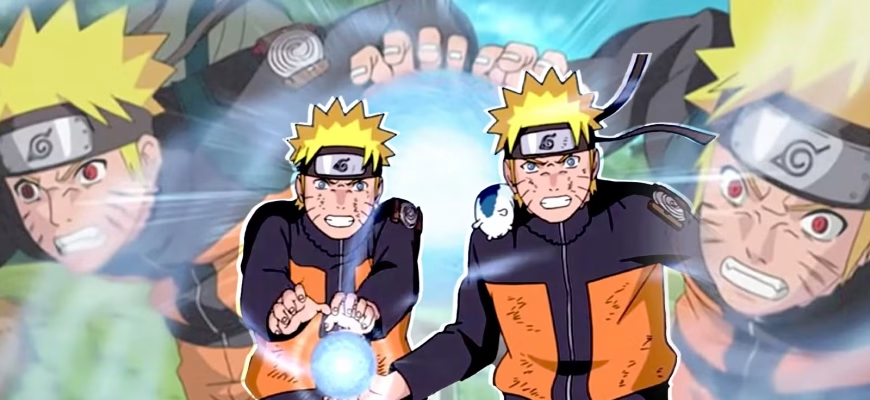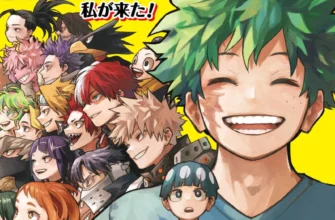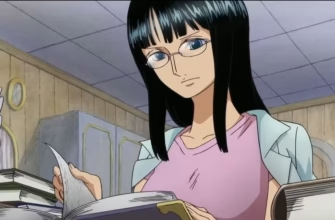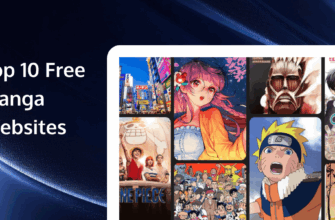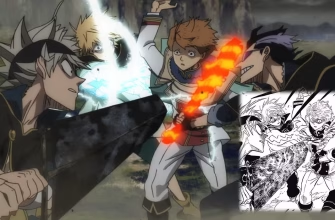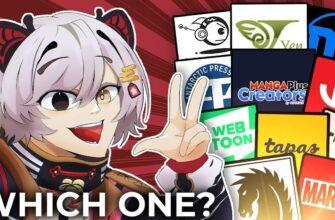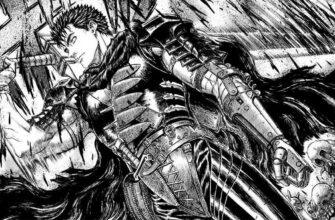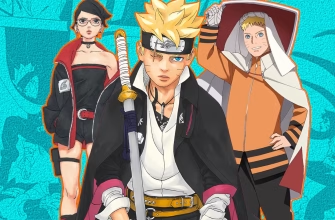The world of manga has seen many icons, but few are as beloved as Naruto. Bursting onto the scene with its imaginative storytelling and vivid art, Naruto captures the journey of a young ninja with dreams of becoming the strongest leader of his village. Its acclaim stretches beyond its plot, touching on universal themes of friendship, perseverance, and identity.
Understanding the essence of Naruto means diving into its rich tapestry that spans across characters, settings, and intricate plotlines. From Masashi Kishimoto’s creative process to the influential ninja world he crafted, each element contributes to the compelling narrative. The series not only illustrates the growth of its characters but also reflects the evolution of its artistic style over time.
This comprehensive guide will unravel the layers of the Naruto manga, from its production elements to its societal impact. Whether you’re a seasoned fan or a curious newcomer, we’ll explore the adaptations, cultural significance, and lasting legacy that have cemented Naruto’s place in manga history.
- Overview of Naruto’s Plot and Themes
- Synopsis of Part I and Part II
- Key Themes and Messages
- Character Development and Creation
- Masashi Kishimoto’s Creative Process
- Iconic Characters and Their Growth
- Setting and World-Building
- The Ninja World and Its Influence
- Important Locations in Naruto
- Production Elements of Naruto
- Artistic Style and Evolution
- Manga Publishing and Serialization
- Spin-offs and Adaptations
- Overview of Naruto Anime Series
- Films, Novels, and Other Adaptations
- Merchandise and Collectibles
- Art Books and Illustrations
- Popular Collectibles and Figures
- Reception and Cultural Impact
- Critical Acclaim and Awards
- Global Influence and Fandom
- Underlying Themes and Resonance
- Societal and Personal Themes
- Messages That Resonate with Fans
- Insights from the Naruto Box Set 1
- Exclusive Content and Features
- Understanding Its Significance
- Conclusion and Final Thoughts
- References and Further Reading
Overview of Naruto’s Plot and Themes
Created by Masashi Kishimoto, “Naruto” tells the story of Naruto Uzumaki, a spirited young ninja. His ultimate dream is to become the Hokage, the most respected leader in his village. The series is divided into two parts, capturing Naruto’s evolution from a misunderstood boy to a formidable teen. Naruto is more than just a skilled fighter; he is also the vessel for the Nine-Tailed Fox, a powerful entity that both aids and complicates his journey. Throughout the series, themes of perseverance, friendship, and seeking acceptance are prominent, as Naruto strives to earn the respect of his villagers and protect them. “Naruto” became a staple in manga culture, with its serialization spanning from 1999 to 2014, and grabbed the hearts of many with its enduring success.
Synopsis of Part I and Part II
Part I of the “Naruto” manga comprises the first 244 chapters, which introduce us to Naruto Uzumaki’s early adventures. As a young ninja from the Hidden Leaf Village, he is determined to prove his worth and become Hokage. This part unveils his character, marked by resilience despite the challenges of hosting the Nine-Tailed Fox. The series debuts Naruto’s initial struggles and ambitions, paving the way for the substantial growth seen later.
Part II advances the storyline following a two-and-a-half-year time skip and is the basis for the anime “Naruto: Shippuden.” In these chapters, Naruto returns to the Hidden Leaf Village more mature and powerful. The stakes rise with the appearance of new threats and alliances. Both parts of “Naruto” maintain their gripping narrative through serialization in Shueisha’s Weekly Shōnen Jump and subsequent tankōbon collections.
Key Themes and Messages
A central theme in Part I is the acceptance of individuals for their true selves. Naruto’s journey highlights his struggle for recognition and support from his community. His perseverance in overcoming loneliness and prejudice is a testament to his unwavering spirit. The narrative ensures readers resonate with Naruto’s path of growth.
In Part II, Masashi Kishimoto wanted the storytelling to be clear and straightforward. This approach makes the manga easy to read, while still engaging audiences with Naruto’s evolving dynamics. Despite concerns about cultural elements like chakra, Kishimoto believed these enhanced the story’s appeal. The mythology of tailed beasts, inspired by Kishimoto’s fascination with monsters like Godzilla, enriches the narrative. Over time, Kishimoto shifted his drawing style to enhance realism, seeking to transcend typical manga styles and deliver a mature, nuanced story.
Character Development and Creation
The “Naruto” manga is celebrated for its dynamic character development, particularly in Part II. This evolution brings an adult feel to the series, as noted by Briana Lawrence from Mania Entertainment. Character designs in “Naruto” have been praised for their appeal. Carl Kimlinger highlighted both the fight scenes and character designs. The artwork is dramatic and exciting, enhancing both the characters and action sequences. The balance between fight scenes and plot development is praised. This balance enriches storytelling through character evolution. Javier Lugo appreciates Masashi Kishimoto’s artwork for its narrative depth and excitement.
Masashi Kishimoto’s Creative Process
Masashi Kishimoto, the writer behind “Naruto,” brought his vision to life in Weekly Shōnen Jump, published by Shueisha. The series debuted in 1999 and has captivated readers ever since. Part I of the manga comprises the first 244 chapters and sets the stage for the story’s enchanting world. Part II unfolds with a time skip, showing the growth of Naruto and his friends. Kishimoto’s creativity doesn’t stop at the manga; he is also involved in the live-action adaptation of “Naruto,” highlighting his commitment to the franchise across different media.
Iconic Characters and Their Growth
Naruto Uzumaki, the optimistic hero of the series, discovers strength through his bonds with others. In contrast, Sasuke Uchiha remains isolated, driven by a desire for revenge. Their relationship is central to the plot, representing their differing life choices and conflict approaches. The coming-of-age theme in “Naruto” emphasizes maturation and respect for elders. This makes the story distinct from other manga like “One Piece” and “Air Gear,” which may take more liberal paths. As Naruto matures, the tone of the series shifts from humor to seriousness. Gender roles in the series lean traditional. Boys eventually outshine girls in career fields, despite girls initially excelling at the Ninja Academy. This narrative choice, while reflecting societal norms, adds a layer of complexity to the character dynamics in “Naruto.”
Setting and World-Building
Masashi Kishimoto, the brilliant mind behind Naruto, created a world rich in Japanese tradition. The setting blends mystical and cultural elements, making it a standout in manga history. The Naruto manga’s roots trace back to a 1997 one-shot story about fox spirits, showing its fantasy aspect from the start. Serialized in Weekly Shonen Jump by Shueisha, the manga is split into two main parts. Part I encompasses the first 244 chapters, while Part II continues the story with new developments. The series protagonist, Naruto Uzumaki, is a ninja from the Hidden Leaf Village. This unique setting combines supernatural abilities with Naruto’s personal quest for recognition and acceptance. Shueisha compiled these chapters into tankōbon volumes, providing readers with detailed artwork and narrative exploration of the world.
The Ninja World and Its Influence
The Ninja World in Naruto is a complex tapestry of various countries, each with its own customs and beliefs. Among these, the Land of Fire stands out as home to the Hidden Leaf Village, also known as Konoha. The cultural richness of the series is heightened by Japanese mythology, which infuses the Ninja World with depth. Confucian ideals also shape the narrative, influencing character relationships and world-building. A key element of the plot is the Nine-Tails, a powerful fox demon. Its attack on Konoha is a pivotal event in the storyline, entwining with Naruto Uzumaki’s destiny as its host. This blend of myth and character development makes the Ninja World compelling and truly captivating for readers.
Important Locations in Naruto
At the heart of Naruto’s story is the Hidden Leaf Village, the central location where most major events unfold. It is more than just a backdrop; it’s Naruto’s home and the place where he cherishes his dream of becoming Hokage. Numerous vital locations are featured throughout his journey as a ninja, each playing a significant role in his development and the overarching narrative. Through Shueisha’s publication in Weekly Shōnen Jump, the series captured widespread interest, introducing these locales to a global audience. Part I of the series lays the groundwork by establishing crucial settings like the Hidden Leaf Village. Subsequent storylines build upon these foundations, further immersing readers in Naruto’s adventurous world.
Production Elements of Naruto
Masashi Kishimoto, inspired by Japanese culture, created the popular manga series Naruto. Before its serialization, Naruto began as a one-shot in 1997 and was officially serialized in Weekly Shōnen Jump in 1999. Kishimoto’s earlier work, Karakuri, won him the Hop Step Award, which recognizes new manga artists. The Naruto manga is divided into two major parts. Part I includes the first 244 chapters. Part II picks up the storyline after a two-and-a-half-year time skip.
For its anime adaptation, Hayato Date directed the series, while Pierrot and Aniplex produced it. Tetsuya Nishio designed the characters at Kishimoto’s request. The first Naruto anime aired on TV Tokyo from October 3, 2002, to February 8, 2007, spanning 220 episodes. This was followed by the sequel series, Naruto: Shippuden, which aired from February 15, 2007, to March 23, 2017.
Artistic Style and Evolution
Originally, Kishimoto wrote a Naruto one-shot featuring a child who could morph into a fox. But, unhappy with this concept, he reimagined it as a story about ninjas. The first eight chapters were well-thought-out, showcasing detailed backgrounds of Konoha village. However, the final serialized version in Weekly Shōnen Jump leaned more towards focusing on the characters.
Kishimoto’s desire to draw monsters led him to introduce tailed beasts into the Naruto storyline. He was heavily influenced by his passion for Godzilla. In Part II of the manga, Kishimoto opted to simplify both panel layouts and narrative structure. This change aimed to make the manga more readable and to prevent the overuse of classic manga tropes. By emphasizing characters over backgrounds, Kishimoto delivered a more engaging story.
Manga Publishing and Serialization
Naruto, the brainchild of Masashi Kishimoto, found its home in Shueisha’s Weekly Shōnen Jump from September 21, 1999, to November 10, 2014. The series culminated in an impressive 72 tankōbon volumes published by Shueisha, with Part I taking up the first 238 chapters and Part II continuing after a significant narrative gap.
In English, Viz Media published Naruto from August 6, 2003, to October 6, 2015. This English version was also compiled into 72 volumes, mirroring its Japanese counterpart. To align the release schedules, Viz Media launched the Naruto Nation campaign in 2007, followed by the Generation Ninja campaign in 2009.
Additionally, Shueisha reprinted Part I in a nine-volume sōshūhen set titled “Naruto Sōshūhen: Uzumaki Daikan” from November 7, 2008, to April 10, 2009. This initiative further cemented Naruto’s legacy as one of the best-selling manga series, loved by fans worldwide.
Spin-offs and Adaptations
The Naruto franchise has inspired a wide array of spin-offs and adaptations, showcasing its lasting impact. Among these, Naruto Jinraiden: The Day the Wolf Howled is a notable spin-off novel published by Shueisha. The rich backstories of beloved characters are further explored in spin-off novels such as the Itachi Shinden series. These novels were so popular that they received a TV anime adaptation which premiered in the spring of 2016. Recognizing the widespread fan interest, J-World Tokyo hosted events for the Sasuke Shinden novel, highlighting the anime visuals in anticipation of future adaptations. Furthering the experience, Shueisha released Part I of the series in a nine-volume set titled Naruto Sōshūhen: Uzumaki Daikan. Viz Media played a key role in synchronizing the release of Naruto manga volumes between Japan and North America through their Naruto Nation and Generation Ninja campaigns.
Overview of Naruto Anime Series
The Naruto anime is a significant adaptation that split into two parts to align with the manga’s storyline. The first anime series, simply titled Naruto, captures Part I of the manga, consisting of an impressive 220 episodes. This series introduces viewers to the world of Naruto Uzumaki and his journey to become the elite ninja leader. As the story progresses, Naruto: Shippuden, the second series, takes over. Naruto: Shippuden is known for its mature themes and more intense storylines, often reflected in its subtitle Hurricane Chronicles. Both series were expertly produced by Studio Pierrot and were broadcast on TV Tokyo, drawing a massive global audience.
Films, Novels, and Other Adaptations
Beyond the anime series, the Naruto world expanded through numerous films, novels, and other adaptations. Seven feature films built upon Naruto’s universe, offering fans additional action-packed adventures. The manga itself was adapted into two distinct anime series—Naruto and its sequel, Naruto: Shippuden. These series maintained high production values under Studio Pierrot and gained prominence on TV Tokyo. In North America, the manga’s reach was stretched further through Viz Media’s licensing, providing English translations that delighted fans. Additionally, the Naruto manga was consistently featured and serialized in the American version of Shonen Jump. By doing so, it reached a wide and diverse audience who could access the story in a serialized format, making it one of the best-known manga series in the West.
Merchandise and Collectibles
Naruto, created by Masashi Kishimoto, is one of the world’s best-loved ninja stories. The series has inspired a wide range of merchandise and collectibles that fans adore. One standout item is the comprehensive Naruto Box Set, which combines ten volumes of the manga into one package. This set often includes unique items like Juliet Music Book Marks, showcasing iconic Naruto artwork. Additionally, the Naruto Collectible Card Game is another popular product. Released by Bandai in Japan in 2003 and in North America in 2006, this game pits two players against each other. Players use custom decks to earn ten battle rewards or exhaust the opponent’s cards. This game set includes a starter deck, a game mat, a turn-counter, and a stainless steel Ninja Blade Coin.
Art Books and Illustrations
The Naruto series has inspired several art books that capture its essence. The first official artbook, Art Collection: Uzumaki, was published in 2004. It presents stunning visuals from the series. Another notable release, titled Illustration Collection: Naruto, came out in Japan in 2009 and North America in 2010. This book includes beautiful illustrations beloved by fans. In 2015, the third artbook, Illustration Collection: Naruto Uzumaki, provided artwork from Shonen Jump comic covers and featured brief commentary by Masashi Kishimoto. For interactive fun, Paint Jump: Art of Naruto was released in 2008, allowing fans to color their favorite scenes. A unique addition, the Naruto Exhibition Official Guest Book, was exclusively distributed at a 2015 art exhibition, showcasing Masashi Kishimoto’s work.
Popular Collectibles and Figures
Naruto’s impact on pop culture extends to collectibles and figures. One prominent product is the Naruto Collectible Card Game produced by Bandai. Released in Japan in 2003 and North America in 2006, this game is a staple for fans. Played by two individuals, it requires strategy and skill. Players use a customized deck of fifty cards and aim to win by gaining ten battle rewards. Alternatively, they can force their opponent to run out of cards. The game sets include essential items like a starter deck, a game mat, a turn-counter, and a stainless steel Ninja Blade Coin. This game not only entertains but also celebrates Naruto’s adventures, making it a must-have for collectors and fans alike.
Reception and Cultural Impact
The Naruto manga, created by Masashi Kishimoto, quickly rose to fame as the world’s top ninja story. It became a staple in Weekly Shonen Jump after its debut in 1999. It ran until 2014, proving its long-standing popularity among fans. The global demand for Naruto led Viz Media to create campaigns like Naruto Nation and Generation Ninja. These campaigns aimed to sync English releases with Japanese ones. Beyond manga, Naruto expanded into anime, films, games, and books, showing its cultural influence. Over a decade, the series wrapped up with 72 volumes, captivating audiences worldwide with its rich storytelling.
Critical Acclaim and Awards
Naruto’s compelling plot and characters garnered both fan and critical acclaim. It was nominated for Favorite Manga Series in Nickelodeon Magazine’s 2009 Comics Awards. Such recognition highlighted its appeal to younger audiences. It won the 16th Manga Barcelona award for the shonen category in 2010. In 2015, it was up for the Tezuka Osamu Cultural Prize, showing its widespread respect in the manga community.
Masashi Kishimoto received prestigious honors for Naruto’s success. In 2014, he earned the Rookie of the Year award from Japan’s Agency for Cultural Affairs. Fans and industry insiders alike valued the talent he brought to the genre. Moreover, in the TV Asahi Manga Sōsenkyo poll in 2021, Naruto ranked as the seventh top manga series, voted by 150,000 enthusiasts.
Global Influence and Fandom
Naruto’s influence spans the globe, winning fans across continents with its dynamic narratives and characters. Fans from various nations often express their admiration through letters, showcasing Naruto’s vast reach. The series’ thrilling action scenes and emotional depth have struck a chord with readers everywhere, making it a cultural staple.
Masashi Kishimoto spoke to Anime News Network about Naruto’s profound impact on fans and media. The conversation illuminated how the series helped shape the anime and manga world. One of Naruto’s successes is its devoted global fan base. These enthusiasts sustain interest through collector’s editions like the 3-in-1 Edition and box sets.
Naruto’s powerful themes of friendship and perseverance continue to inspire audiences worldwide. This transmedia franchise draws a diverse audience, immersing them in its rich and lively world. Its legacy is not just in the stories told, but in the diverse communities it has helped to build.
Underlying Themes and Resonance
“Naruto” manga, crafted by Masashi Kishimoto, explores deep themes that are woven intricately into its storyline. At its heart, the manga depicts the journey of acceptance and understanding. Naruto Uzumaki, the protagonist, moves from being an outcast to a cherished member of his community. Kishimoto introduces chakra as a fundamental energy source, which, despite its Japanese roots, finds universal resonance. The addition of tailed beasts brings a mythical dimension, drawing from Kishimoto’s personal interest in monsters. As the series progresses into Part II, Kishimoto’s decision to adopt a more realistic drawing style marks the growth and maturation of the story. This reflects his commitment to maintaining clarity and emotional impact throughout the manga’s journey.
Societal and Personal Themes
The “Naruto” manga beautifully intertwines societal and personal growth themes. It surprises readers by embedding Confucian values, offering insights into this ancient philosophy. The series stands out with its portrayal of violence, not as a mere spectacle, but as an element to be intelligently addressed. Naruto’s story is a narrative of overcoming alienation and finding one’s place in society, contrasting with stories like “Akira” and “Neon Genesis Evangelion” where alienation is persistent. This coming-of-age tale has resonated with many as it focuses on personal growth and societal integration. Sasuke’s clan symbol, the uchiwa fan, adds another layer of depth, grounded in Japanese myths where it has the power to ward off evil, mirroring Sasuke’s struggle against harmful influences.
Messages That Resonate with Fans
The “Naruto” series has a diverse fan base worldwide, united by their admiration for its story. Fans express their love through countless letters, emphasizing the manga’s global impact. Dynamic storytelling is at the core of “Naruto,” captivating both dedicated readers and those new to manga. The characters are memorable, and the epic battles are thrilling. The themes of friendship and perseverance stand out, resonating with readers of different ages. These themes often serve as life lessons, inspiring resilience and hope. The special 3-in-1 edition of the manga offers fans a seamless reading experience, immersing them deeply into the narrative without disruption, allowing them to enjoy the full scope of the series.
Insights from the Naruto Box Set 1
The Naruto Box Set 1 is a treasure trove for fans of this classic manga series. Featuring volumes 1 to 27, it offers the chance to revisit the early adventures of Naruto Uzumaki. Published by VIZ Media LLC, it includes a bonus booklet and a two-sided poster for collectors. The packaging stands out with robust cardboard and unique designs on all sides. Fans rave about its pristine delivery condition, free from dents or damage. This set not only offers a nostalgic trip through the story but also garners praise for its visual appeal, making it a must-have for any Naruto enthusiast.
Exclusive Content and Features
Naruto has given rise to numerous exclusive features that delight its followers. In 2008, an interactive coloring book called “Paint Jump: Art of Naruto” was released, encouraging fans to engage creatively with the series. Meanwhile, an unreleased artbook known as the Naruto Exhibition Official Guest Book was shared with visitors at a special art exhibition, showcasing Masashi Kishimoto’s work.
Additionally, four comprehensive guidebooks were published between 2002 and 2014. They cover everything from character profiles to Jutsu guides and drafts by Kishimoto. These guidebooks provide a deeper insight into the series for those who wish to delve into its rich narrative and character complexity. Furthermore, a special fanbook marked Naruto’s 10th anniversary. It included beautifully crafted illustrations by other renowned manga artists and featured an engaging interview between Kishimoto and Yoshihiro Togashi, celebrating their contributions to manga artistry.
Understanding Its Significance
Naruto’s significance in the world of manga cannot be understated. In 2021, it ranked seventh in TV Asahi’s Manga Sōsenkyo poll, which drew votes from 150,000 people. Its resonance with traditional Japanese culture, expressed through characters and story elements drawn from mythology, enriches its narrative depth. Techniques named after Shinto deities, like those used by Itachi, exemplify this cultural backdrop.
Masashi Kishimoto’s creation did not go unrecognized. In 2014, he won the Rookie of the Year Award from Japan’s Agency for Cultural Affairs, a testament to Naruto’s far-reaching impact. In 2015, the series also earned a nomination for the prestigious 19th Tezuka Osamu Cultural Prize, further solidifying its status as a cultural phenomenon. By weaving in references to Japanese myths, Naruto invites readers to explore these deeper layers, ultimately broadening their understanding of the world’s most-loved ninja saga.
Conclusion and Final Thoughts
The Naruto manga series by Masashi Kishimoto is much more than just a story about ninjas. It’s a cultural phenomenon that has inspired various media and products since its inception. From interactive coloring books like Paint Jump: Art of Naruto to exclusive artbooks such as the Naruto Exhibition Official Guest Book, the series offers something for everyone. The collection of guidebooks and fanbooks, such as the Secret: Writings from the Warriors Official Fanbook, provides fans with deep dives into character profiles and exclusive illustrations.
Moreover, the Naruto Collectible Card Game, launched in 2003 in Japan, adds an interactive element for fans to engage with. The strategic card battles offer a new way to experience the world of Naruto.
Conclusion:
Naruto’s impact goes beyond manga and anime; it influenced fans globally. Products like collectible card games and art exhibitions enhance this vibrant universe. Whether you’re new to the series or a long-time fan, Naruto’s rich content offers endless exploration. Its blend of action, art, and strategic gameplay ensures it remains a beloved series worldwide.
References and Further Reading
For those seeking to explore the artistic world of Naruto, “Uzumaki: the Art of Naruto” by Masashi Kishimoto is a must-read. Published by Viz Media in 2007, this book showcases the stunning artistry behind the series. It can be referenced by its ISBN: 978-1-4215-1407-9. Pages 141 and 142 are particularly noteworthy.
For television fans, the completion of Naruto was celebrated on Fuji Television in a special episode titled “Completion of Naruto! Masashi Kishimoto SP.” This episode aired on December 13, 2014, and is available solely in Japanese.
Here are some more resources for further reading:
- “Naruto Box Set” – A comprehensive collection of the manga series.
- “Naruto Spin-Off Manga Mini-Series” – Offers more stories in the Naruto universe.
- Kyoto Seika University International Manga Research Center – A place for deeper study and translation of manga.
These materials and events capture the essence of Naruto, providing insights and art for fans and new readers alike.

